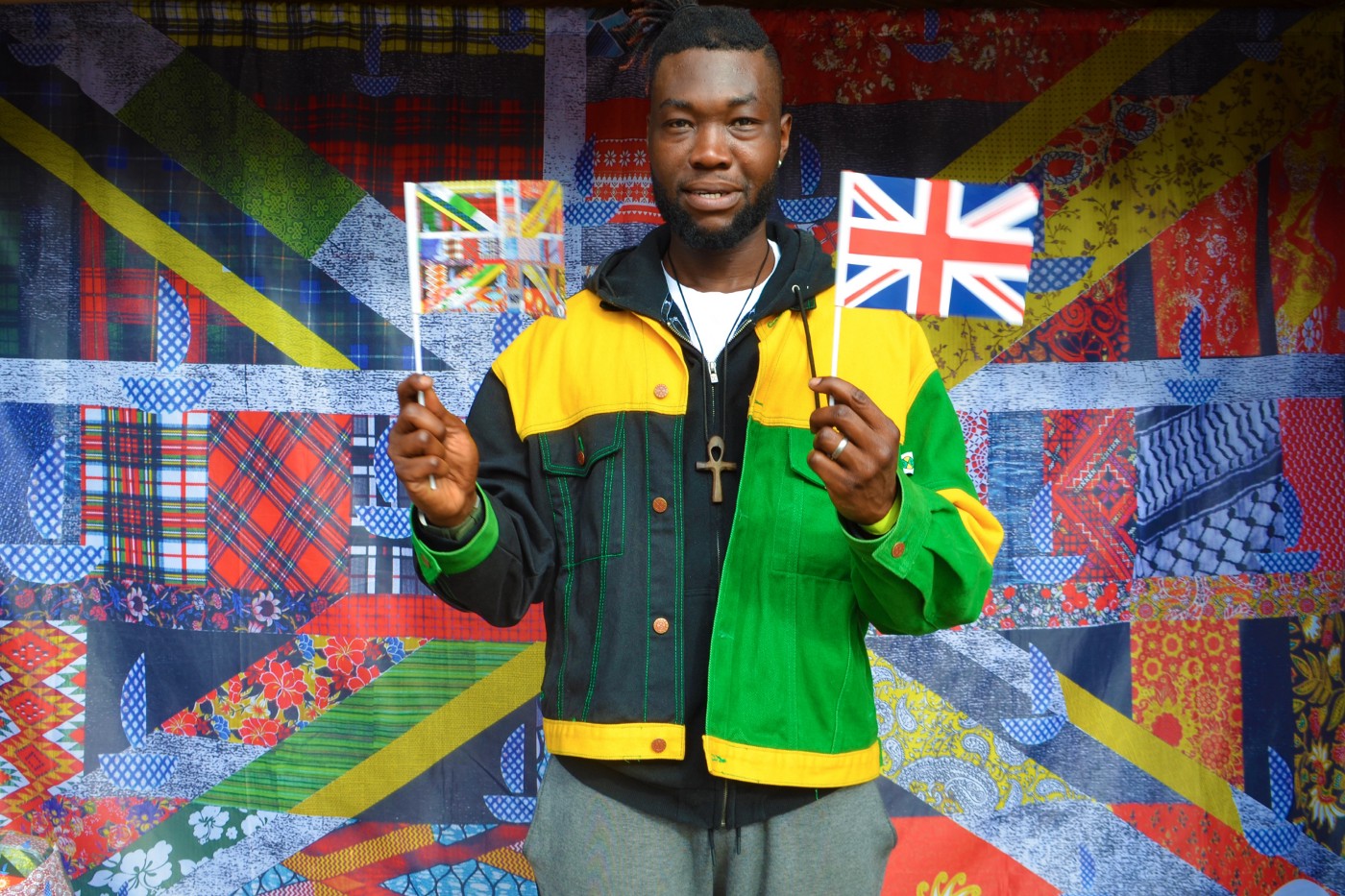Syncretism, double consciousness & hybridisation
mechanisms for understanding cross-cultural identities.

“Ain’t No Black In The Union Jack” — A proposal for a new flag for the UK and other socially engaged art work by Gil Mualem-Doron
link here
Paul Gilroy is insistent that ‘we must become interested in how the literary and cultural as well as governmental dynamics of the country have responded to that process of change and what it can tell us about the place of racism in contemporary political culture.’ (2004:13) His theme of Double Consciousness, derived from W. E. B. Dubois, involves ‘Black Atlantic’ striving to be both European and Black through their relationship to the land of their birth and their ethnic political constituency follow this wiki link for more on this point.
As with much postcolonial criticism the aim to understand and reconcile individual and national identity. Gilroy highlights Enoch Powell’s notorious 1968 ‘rivers of blood speech’ full of the ‘terrifying prospect of a wholesale reversal of the proper ordering of colonial power . . . intensified by feelings of resentment, rejection, and fear at the prospect of open interaction with others.’ (2004:111) Put presciently, ‘it has subsequently provided the justification for many a preemptive strike’ (bid)
So, the first item I have posted is a short video which gives you an overview of Black British History. It argues for the need (for all of us) to recognise the representation of black and ethnic voices in British (and therefore Western) History. In other words, representation is about voices, stories and characters the we DON’T SEE as much as voices, stories and characters that we do see. It’s also about giving a context and understanding to the stories we see and hear.
As Barry notes the stress on ‘cross-cultural’ interactions is indeed a characteristic of postcolonial criticism. Often found by foregrounding questions of cultural difference and diversity, as well as by celebrating ‘hybridity’, ‘ambiguity’ and ‘cultural polyvalency’. A unique position where ‘individuals may simultaneously belong to more than one culture – the coloniser and the colonised’. (2016:198) Even Fanon suggests an emphasis on identity as ‘doubled, or ‘hybrid’, or ‘unstable’.
Ghost Town by The Specials conveys a specific moment in British social and political history while retaining a contemporary relevance. The cultural critic Dorian Lynskey has described it as ‘’a remarkable pop cultural moment’’ one that “defined an era’’. The video and song are part of a tradition of protest in popular music, in this case reflecting concern about the increased social tensions in the UK at the beginning of the 1980s. The song was number 1 in the UK charts, post-Brixton and during the Handsworth and Toxteth riots.
The aesthetic of the music video, along with the lyrics, represents an unease about the state of the nation, one which is often linked to the politics of Thatcherism but transcends a specific political ideology in its eeriness, meaning that it has remained politically and culturally resonant.
The representations in the music video are racially diverse. This reflects its musical genre of ska, a style which could be read politically in the context of a racially divided country. This representation of Britain’s emerging multiculturalism, is reinforced through the eclectic mix of stylistic influences in both the music and the video.
- Q1: Where can you identify ‘hybridity’, ‘ambiguity’ and ‘cultural polyvalency’ in this music video?
- Q2: How does this text apply to Fanon’s 3 phase plan of action?
- Q3: How is the audience called / addressed / hailed (interpellation)? Use examples from both the lyrics and the visual grammar (shot, edit, mise-en-scene) to show how audiences are drawn into a specific subject position / ideological framework?
Define these terms
- COLONIALISM
- POST COLONIALISM
- DIASPORA
- BAME
- DOUBLE CONSCIOUSNESS (GILROY)
- CULTURAL ABSOLUTISM / RACIAL ESSENTIALISM
- CULTURAL SYNCRETISM
- ORIENTALISM (SAID)
- APPROPRIATION
- CULTURAL HEGEMONY
- THE PUBLIC SPHERE (HABERMAS)
- THE ROLE OF PUBLIC SERVICE BROADCASTING IN TERMS OF FAIR REPRESENTATION OF MINORITY GROUPS / INTERESTS

